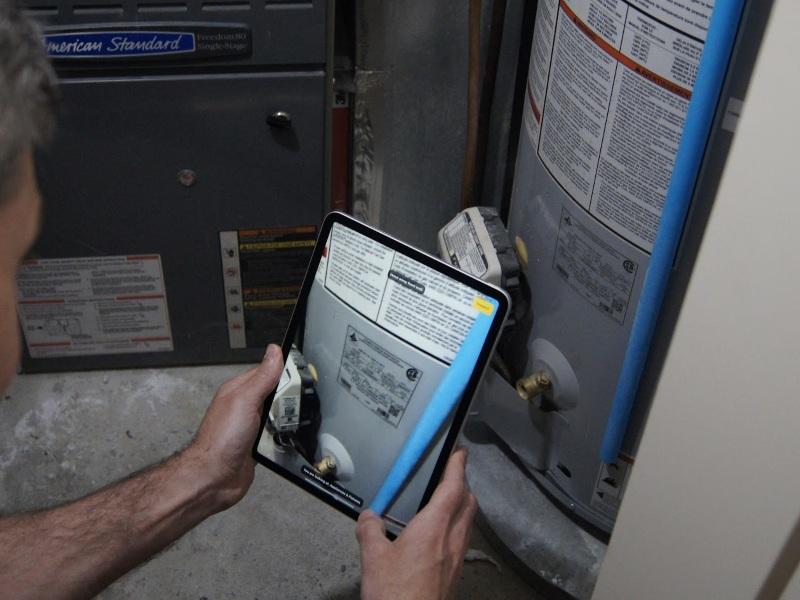
Toronto-based real estate developer TAS has released its second annual impact report, which features the debut of its impact measurement system – showcasing around 930 indicators it is using to track progress along sustainable and social metrics.
A highlight of the report is the company's development at 2 Tecumseth St. in Toronto, where it is reusing approximately 21,000 tonnes of salvaged material such as brick, precast concrete, steel rafters, tracks and concrete slabs.
The report also showcases TAS’ whole-life net-zero pilot project at 880 Eastern Ave. in Toronto’s Leslieville neighbourhood, where it aims to develop the country’s first net-zero mid-rise building.
“The biggest highlight is really unpacking the framework and the strategic activities, and then going deeper in terms of understanding what the metrics are that we have begun to measure, what they align to broadly across the industry, and then really specific to the work that we're doing,” Liza Stiff, TAS’ vice-president of impact, implementation and innovation, told SustainableBiz.
“Then really understanding that we're both building that framework and software and metrics, but also we're working with our pipeline of projects at the same time.”
TAS has an active development pipeline and a portfolio totalling over seven million square feet across 22 properties throughout the Greater Toronto and Hamilton Area. It has a goal of achieving net-zero emissions by 2045.
2 Tecumseth and 880 Eastern
When the five-acre site of a former abattoir at 2 Tecumseth is ready for occupancy in 2026, it will consist of seven buildings: two towers, one mid-rise and four low-rises, translating to 1,000 new homes.
It has also diverted 93 per cent of its waste – nearly 32,000 tonnes – from landfill. This includes what was reused.
The 12-storey 880 Eastern Ave. project originated a couple of years ago when TAS was testing whether it would be able to complete an all-mass-timber residential project. The company went with a low-carbon material coverage, and at the same time was undergoing a sweeping embodied carbon analysis.
“Then fast forward to Leslieville, and we had done our embodied carbon analysis across our portfolio. What we wanted to do was then ratchet down and understand, on a project like Leslieville, how we could really lean into both the structural system (and) the moves of the building,” Stiff said.
“So removing a level of parking, looking very seriously at step-backs and buildings and (removing) transfer slabs and just by making some very simple moves at a very concept schematic level of a base building, how we could ratchet down those carbon-intensive materials.”
TAS states these measures will result in a 37 per cent decrease in embodied carbon emissions. It predicts a further 29 per cent reduction through the use of aspects such as cladding and the implementation of a geothermal system.
Construction is slated to begin in winter 2024, which will create 180 new housing units.
Upon its acquisition, TAS underwrote a carbon budget into the project plan based on the cost of carbon removal. For net-zero certifications, it will aim for the Canada Green Building Council’s Zero Carbon Building Standards.
TAS also began using life-cycle analysis software to determine embodied carbon emissions at eight of its developments.
TAS’ impact measurement system
TAS worked with Salt Lake City-based Sorensen Impact Center over the last two years as peer reviewers to demonstrate how the actions taken as a result of its indicators will lead to the desired outcomes.
The indicators are grouped into 18 strategic activities encompassing a wide range of factors affecting a building over its lifetime. These include operational and embodied greenhouse gases, waste, climate risk management and community engagement.
“If you take, for example, building materials harm, within that, you've got to look at where they're (the building materials) coming from, what type of chemicals would be put into the materials or . . . put into the atmosphere or the worker working on those materials,” Stiff explained.
“So they're quite in depth in terms of how to measure some of those things.”
The company has been working on the system for over two years. It aligns with the internationally-recognized Common Impact Data Standard and Impact Management Norms. It also incorporates IRIS+ social and environmental impact metrics managed by the Global Impact Investing Network.
“It's not that they're really bespoke (indicators), particularly in the sustainability side. They're all very much cross-checked with more regular industry standards that the industry knows. And that's really because there's a practical side to it,” Stiff said.
“We’re using the universal language of sustainability, but wanting a thorough understanding of the metrics and pushing where we're spending our money and making our decisions.”
EDITOR'S NOTE: This article was amended after being published to add updated statistics on the quantity of recycled materials, based on new information supplied by TAS. The Canada Green Building Council’s design and operational standard was amended to name it by its formal title.










